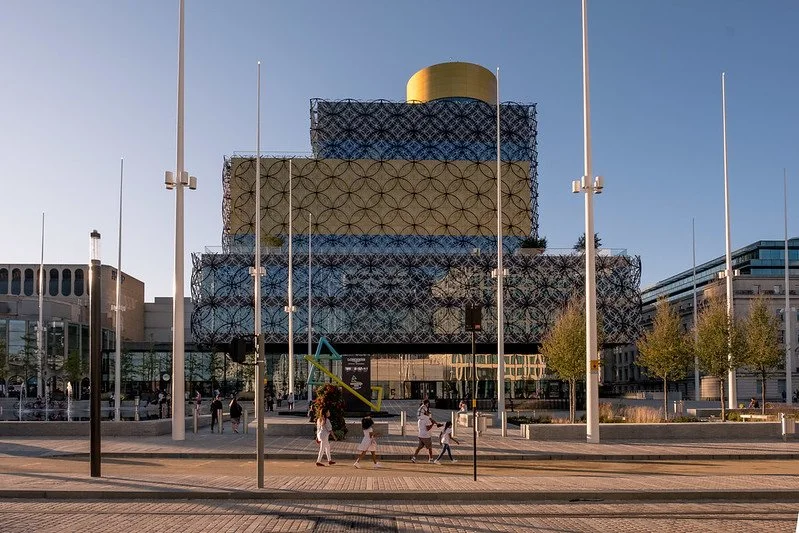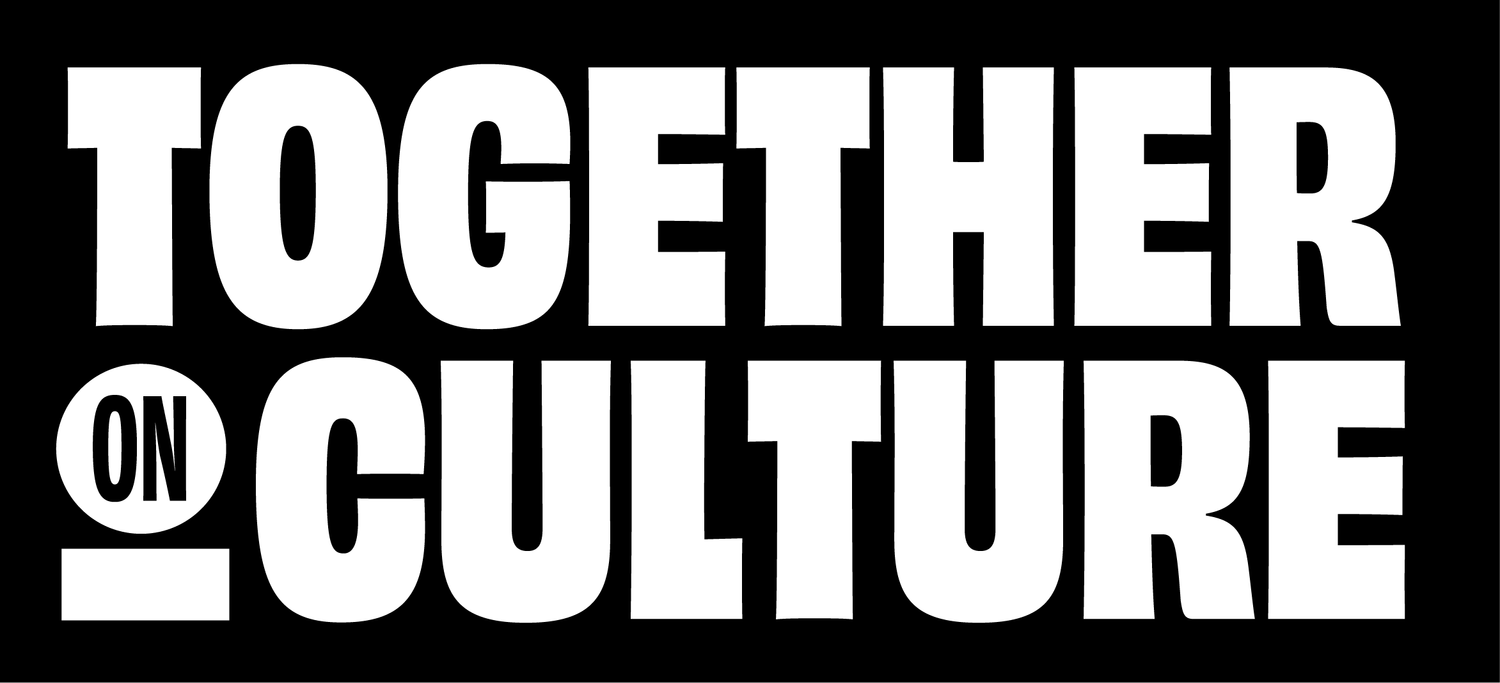Pillar 4: The Placemakers
There is no city without culture, and culture needs spaces and places across the city to thrive: it's a completely symbiotic relationship and one that is central to this framework. In this pillar we focus on a few key challenges. How do we ensure that Birmingham has cultural infrastructure that is the envy of other cities? How can we ensure culture is fully mainstreamed into planning and regeneration and that we address any key gaps in our cultural asset base? And of course, how can we push culture further out across Birmingham so it’s not exclusively a city-centre experience?
Creating Space for Culture
Culture, placemaking and urban regeneration go hand in hand for a city like Birmingham. Whether it’s art, music, drama or dance, culture breathes life into spaces to transform them into places, for people. The future success of our city hinges around protecting, and enhancing, our cultural offer and creativity more widely reinforced in our Central Birmingham Framework: Our Future City. As covered in Pillar One, the ‘crane count’ indicator for building projects across Birmingham is currently a very healthy one, and that push for development is not just de-risked through culture; it is facilitated by it.
In the city’s draft Local Plan, which closed for consultation in 2024, there is a strong commitment to culture that we propose to augment as part of this cultural framework. The Local Plan states that proposals that reinforce Birmingham's role as ‘an international centre for tourism, arts, culture, and major events’ will be supported. The plan underlines support for cultural facilities small and large, and states that any plans for their expansion will be supported (so long as they do not conflict with other policies in the Local Plan).
Also under the Local Plan, any large scale developments will be required to submit a Cultural Needs Assessment to show how the plans will support culture and the arts, and where appropriate, developers will be asked to support new and expanded cultural facilities. There are also a range of clauses in the Local Plan protecting cultural assets from being lost through development, and there is a policy supporting the meanwhile use of vacant buildings and sites for creative or cultural activities. All of this is supported in the Local Plan for Birmingham by the public’s strong support (at 93%) during its consultation process for a policy that protects arts and cultural facilities.
For both public and private-sector led developments there is a very strong case for being ambitious in having culture fully integrated into strategic regeneration frameworks, masterplans and development plans. In two papers prepared by Arup for the West Midlands Combined Authority, the role of developers in the delivery of infrastructure, and the benefit it brings to the development, is set out very clearly.
How culture supports private sector-led developments:
Source: WMCA R20 – Making the Case for Culture, Arup, March 2023.
This ‘virtuous circle’ diagram outlines how cultural investment increases the attractiveness of development, which boosts demand, which then delivers an uplift to land value, and as a result increases the appetite for cultural investment in the first place.
Credit: Johan Persson
Cultural infrastructure deficit
With a supportive Local Plan we can achieve real progress on addressing what has been identified as a Cultural Infrastructure deficit for Birmingham. According to data assembled by the team at Birmingham Hippodrome, the West Midlands has fewer theatres relative to its population than other nations and regions of the UK. There are 2.4 venues per 100,000 inhabitants in the UK, according to research for UK Theatre but, in the West Midlands the figure is nearly 25% less, with only two venues per 100,000 inhabitants.
Average number of theatre venues per 100,000 inhabitants, by nation/region:
Source: Economic Impact Assessment of UK Theatre Sector, Sound Diplomacy for UK Theatre and SOLT (2023)
A mapping of theatre assets by the Birmingham Hippodrome team also reveals that Birmingham has approximately 563 seats per 100,000 inhabitants, significantly lower than other major cities in the UK, including Manchester (1,351 seats), Cardiff, Belfast and Glasgow.
Average number of theatre seats in select UK cities per 100,000 inhabitants:
Source: Primary research by Birmingham Hippodrome and BOP Consulting on venue websites and seat plans
If the scope of this analysis is broadened out to include a wider set of cultural asset classes, through the BOP500 Cultural Infrastructure Index, then it is clear that Birmingham could be better served in infrastructure terms:
Source: BOP Consulting for the Birmingham Hippodrome. Note that Birmingham actually has two concert halls and not one.
Under this pillar of our strategic framework for culture we will propose a major uplift in our ambition to use planning and development as a tool to increase our levels of cultural infrastructure availability, per capita of population. This naturally needs to be set alongside our objectives in Pillar One to increase revenue funding for the arts, too.
How can we use our planning system in this way? By working more closely with city planners and seeking to make changes to current procedures and rules including:
First, by ensuring that the cultural team at BCC are consultees on any formal changes to local and national planning frameworks;
that cultural assets are classed as infrastructure in Birmingham’s Infrastructure Development Plan;
Then we need to ensure alignment between planning policy and cultural policy by ensuring the Cultural Compact and Birmingham City Council can review and support large-scale planning applications;
Ensure that there are planning application validation checklists to maximise the quality and accountability of cultural infrastructure investment from developers;
Ensure that planning applications have a higher level of ambition in their Cultural Needs Assessments;
Ensure that developers are clear on the full range of values associated with including cultural provision within of their proposals and;
Leverage Section 106 and Community Infrastructure Levy payments for cultural provision, potentially matched against the Shared Fund for Culture recommended under Pillar One of this framework.
This approach is outlined further in Action 4.1 detailed below and would need to be pursued in partnership with others shaping spatial policy across the city, including our important network of Business Improvement Districts (BIDs).
Cultural integration at Smithfield
The Tubeworks at Icknield Port Loop
Redistributing Culture
We want to ensure that culture and creativity are accessible across the entire city, not just concentrated in the city centre. This involves reaching deeply into local neighborhoods and recognising the rich cultural fabric that already exists in these communities, celebrating and amplifying their unique contributions. A more distributed cultural offer can foster inclusivity, engagement, and pride in every corner of Birmingham.
Key to this effort is supporting local creative communities and cultural anchors, such as The Legacy Centre of Excellence or Soul City Arts, and community groups like the Muath Trust, Zawiya Trust, Aspire and Succeed, and the MIAH Foundation. These organisations are already embedded in their neighborhoods, fostering cultural expression and engagement. For example, Centrala in Digbeth, the UK’s only Central and Eastern European arts organisation, highlights the importance of responding to the diverse needs of specific communities.
Our libraries play a pivotal role as gateways to knowledge and culture. By transforming libraries into vibrant local hubs with initiatives like the Warm Welcome initiative with free tea and coffee and cultural programming, Birmingham can provide inclusive spaces that nurture creativity and community connections.
Cultural placemaking is another powerful tool, as seen in the Liveable Neighbourhoods work led by Birmingham City Council, such as the case study of Tyseley and Hay Mills and in the Cultural Placemaking Pilots in Druids Heath, Digbeth and Newtown. Designating Cultural Action Areas can ensure neighbourhoods like Balsall Heath, Small Heath, and the Jewellery Quarter are celebrated for their distinct cultural identities. For instance, the Ramadan markets on Coventry Road illustrate how local traditions can draw broader audiences and enrich the city’s cultural landscape.
Critically, we need to listen to and consult with local communities to understand their priorities and values, ensuring cultural programming reflects their needs. By investing in neighborhoods, supporting grassroots initiatives, and recognising the vibrancy of existing cultural expressions, Birmingham can make sure creativity thrives everywhere, across the whole of the city.

Our library network, bringing culture to the people
In addition to being in possession of one of the largest Shakespeare libraries in the world, Birmingham’s public libraries are a vital part of the city’s cultural life. While there are some planned cost savings required for public libraries in Birmingham, most libraries will remain open across the city and are a well-used, valued community resource and statutory service; very much part of the future for the city
Transport and connectivity
The public transport system isn’t the focus of this paper, but you can’t enjoy culture if you can’t get to it. In the views collected to co-design this framework, transport connectivity was highlighted as an issue for many in becoming more engaged in culture and the arts, making the service and infrastructure improvements outlined in the city’s 2021 Local Transport Plan all the more important.
Issues raised included the cost of public transport and its perceived quality and reliability; timetable challenges including services ending before the close of city centre shows and performances; and that for some their neighbourhoods simply don’t have enough connectivity per se to get to culture, making local hubs even more important.
For the cultural workforce, and those working in the night time economy, more – and later – services that allow for those working into the night are critical.
Transport is also an issue for schools wanting to take part in culture. We need to take a fresh look at how we ensure that affordable options are available to take school groups to cultural events and institutions, to make good on our commitment in this strategy to ensure every school has a culture programme and every child has multiple cultural experiences in a given year.
A creative cityscape
In this fourth pillar we also embrace a challenge set by some of those involved in the co-design workshops that created this framework: how do we make Birmingham a city that looks and feels like a cultural epicentre? How can culture be felt across the streets of the city and not just in its museums, galleries and theatres?
Birmingham City Council is already working in parallel to this framework on a comprehensive Public Art Strategy that will help to bring creativity into everyday life across the city. This could encompass diverse forms, from street art to pop-up exhibitions, ensuring a vibrant cultural presence in neighbourhoods right across the city.
Birmingham’s Digbeth district, renowned for its street art and creative hubs like the Custard Factory, offers a model of what could be done. Local artists and urban art events have already contributed to the area’s dynamic identity. Expanding this approach to other parts of the city can create cultural landmarks in unexpected places. For instance, underused spaces like vacant retail fronts could become temporary galleries for exhibitions or performances, transforming streetscapes into immersive artistic experiences.
Strategic cultural wayfinding is another key opportunity. Artworks at transport gateways, such as New Street Station or Moor Street, can serve as welcoming cultural markers, ensuring that the spaces around cultural venues, such as the pathways between the train stations and the Hippodrome, reflect the creativity of the venues themselves and will provide a cohesive cultural experience. It’s also important that the public realm that gets you to and from a cultural destination is safe, clean and legible.
Partnerships with businesses and educational institutions can amplify all these efforts by hosting pop-up exhibitions, performances, and interactive installations, enriching the urban landscape and connecting communities.
Free festival programmes (e.g. Birmingham Weekender and B-Side) also support this objective of visibility and engagement, reaching hundreds of thousands of people in the public realm – many of whom would not normally engage with more formal cultural offerings.
Pillar 4: Action Areas


















